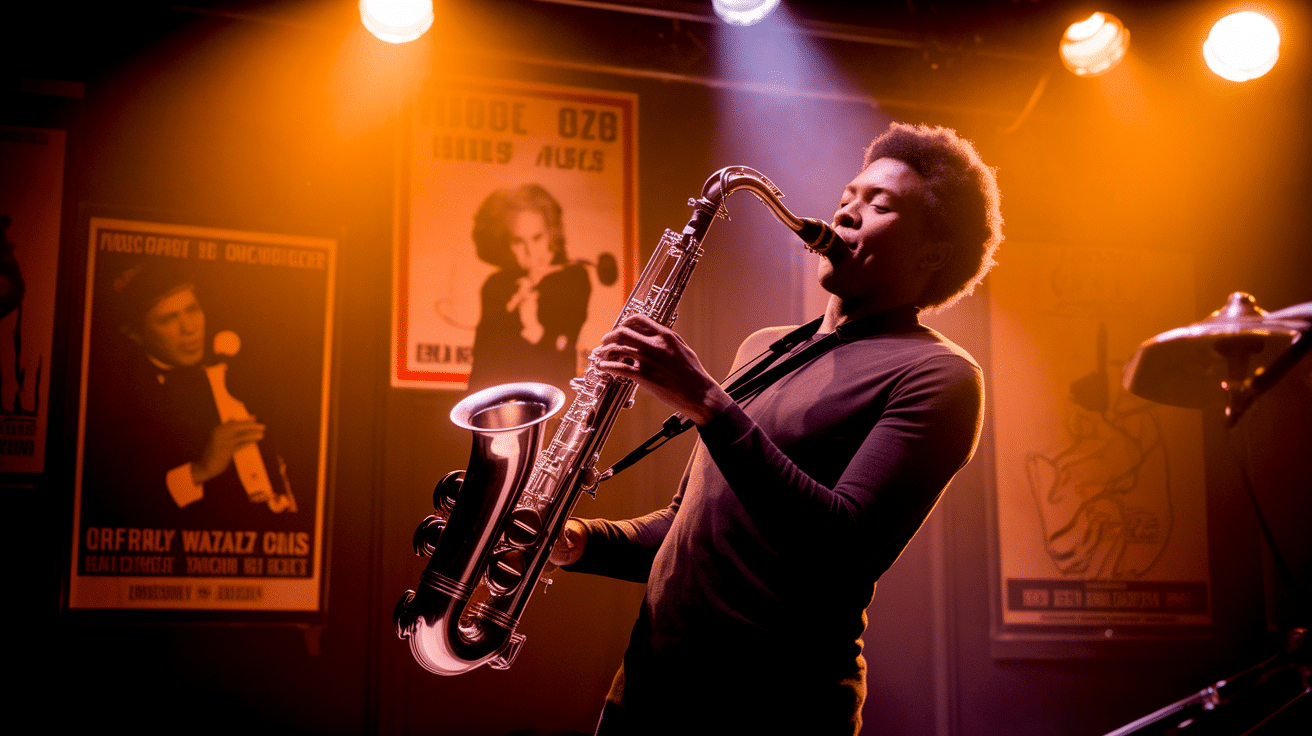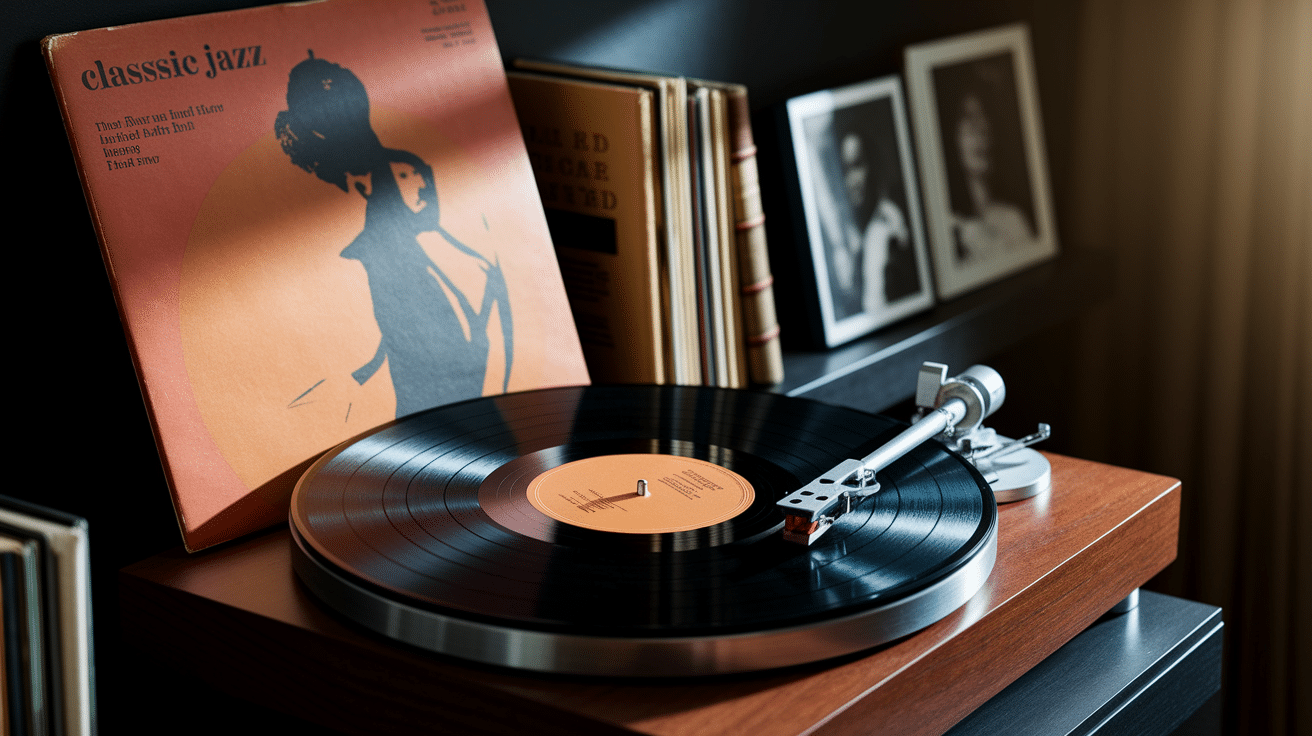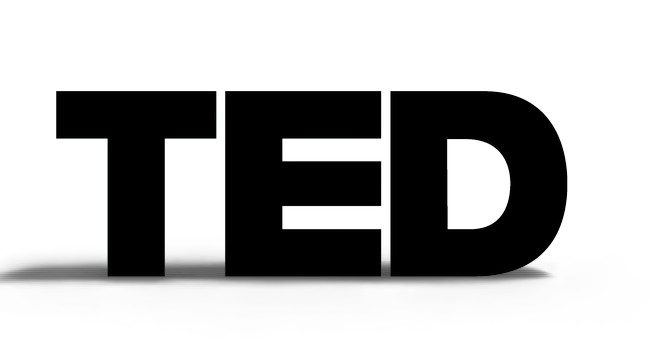Did you know that jazz, a uniquely American art form, has inspired music in over 100 countries worldwide?
From Tokyo’s bustling jazz clubs to Paris’s smoky basement venues, this musical style has crossed borders in ways few cultural movements ever have.
Let’s get into fun and downright shocking facts about jazz that will give you a whole new perception of this music.
What Makes Jazz Unique?
Jazz stands out through improvisation, musicians create new melodies on the spot, having musical conversations in real time.
Its distinctive swing feel, syncopated rhythms, and blue notes give jazz its emotional quality.
Born from African American musical traditions, jazz has developed into countless styles, from early New Orleans jazz to bebop, cool jazz, fusion, and beyond.
Jazz Fun Facts
From banned performances to accidental innovations, here are some facts about jazz that you might have never heard of.
1. Jazz was Born in New Orleans’ Melting Pot
New Orleans around 1900 was where African, French, Spanish, and Caribbean cultures mixed. African rhythms met European brass instruments, while blues and ragtime crossed paths with church music.
Musicians gathered in Congo Square on Sundays, one of the few places where enslaved people could play traditional music, creating the foundation for what would become jazz.
2. Jazz Used to Be America’s Pop Music
During the 1920s and 1930s, “Jazz Age,” jazz was America’s popular music. Big bands led by Duke Ellington, Count Basie, and Benny Goodman packed dance halls with thousands of fans.
Record sales dominated charts, and artists like Louis Armstrong weren’t just respected musicians; they were genuine celebrities appearing in films and on magazine covers.
3. The First Jazz Recording wasn’t by African Americans
The first commercially successful jazz recording came from a group of white musicians called the Original Dixieland Jazz Band. In 1917, they recorded “Livery Stable Blues,” which sold over one million copies.
They had learned from watching Black musicians in New Orleans, but no opportunities were available to Black artists due to racial discrimination.
4. Jazz Inspired the Birth of Other Genres
Jazz has inspired many modern genres. Chuck Berry and Little Richard adapted jazz rhythms for early rock and roll. James Brown took jazz’s horn sections to develop funk.
Early hip-hop DJs sampled jazz recordings, while artists like Kendrick Lamar continue collaborating with jazz musicians today. Listen closely to your favorite music, you might hear jazz’s DNA hiding there.
5. Bebop Changed Everything
In the early 1940s, Harlem jam sessions, Charlie Parker, Dizzy Gillespie, and Thelonious Monk created bebop, jazz on steroids with faster tempos and complex harmonies. These virtuosic solos were meant for listening, not dancing.
Bebop transformed jazz from popular entertainment into serious art music almost overnight, like a pop band suddenly playing complex classical music.
6. Jazz Musicians Invented Scat Singing by Accident
Louis Armstrong reportedly dropped his sheet music while recording “Heebie Jeebies” in 1926 and started improvising with nonsense syllables instead of stopping. The recording became a hit, launching scat singing as a technique.
When you hear singers like Ella Fitzgerald creating incredible vocal improvisations, you’re experiencing the version of that happy accident.
7. Jazz has Its Language
Jazz musicians use a unique language in their music and conversations. Terms like “cat,” “axe,” “woodshedding,” and “trading fours” form a specialized vocabulary.
On stage, they use hand signals, eye contact, and musical cues, like a raised fist to signal the end or a pointed finger for the next soloist.
8. Women Pioneers in Jazz Broke Barriers
Women have been jazz pioneers from the beginning. Pianist Lil Hardin Armstrong was Louis Armstrong’s musical director.
Mary Lou Williams wrote arrangements for Duke Ellington and mentored Monk and Gillespie.
Vocalists like Billie Holiday and Ella Fitzgerald weren’t “just singers” but innovative instrumentalists whose phrasing inspired generations of musicians. They succeeded despite racial and gender discrimination.
9. Jazz was Once Banned in Some Places
In the 1920s, several American cities tried to restrict jazz, viewing it as morally corrupting. Nazi Germany banned it as “degenerate music,” while the Soviet Union vacillated on whether jazz was acceptable.
Jazz represented freedom, rule-breaking, and racial integration when society wasn’t ready for these changes. It was powerful enough that governments tried to silence it.
10. The World’s Longest Jazz Performance Lasted Days
The record for the longest continuous jazz performance was set in New Orleans over 196 hours of non-stop jazz.
Musicians rotated in shifts, showcasing jazz’s improvisational nature, where music can continue indefinitely with fresh players. Some jazz songs last longer than entire albums in other genres.
11. Jazz is a Global Phenomenon
While born in America, jazz has become truly global. Japan has tiny, exclusive jazz clubs in Tokyo. European countries have developed distinctive styles, while Latin jazz blends Afro-Cuban rhythms with jazz harmonies.
Each country adds its elements, traditional instruments, local rhythms, and cultural sensibilities, creating hybrids that transcend language barriers.
12. Jazz Uses a Unique Song Structure
Jazz typically follows a “head-solo-head” format. The band plays the main melody, takes turns improvising solos over the chord progression, then returns to the head.
A 32-bar jazz standard might stretch to 10 minutes as each musician takes the spotlight. This structure balances tradition with innovation.
13. Some Jazz Standards were Written for Broadway
Many jazz standards started in Broadway musicals or Hollywood films. “Summertime,” one of the most recorded jazz standards, comes from Gershwin’s opera “Porgy and Bess.”
“My Funny Valentine” was from the 1937 musical “Babes in Arms” before Miles Davis and Chet Baker uplifted it. This Broadway connection created a rich repertoire with strong melodies perfect for jazz improvisation.
14. Jazz Greats Often Never Read Music
Many legendary jazz musicians, including Erroll Garner, Wes Montgomery, and Buddy Rich, couldn’t read music. They played entirely by ear, learning songs by listening rather than reading sheet music.
This approach, rooted in African American oral tradition, shows how jazz values feeling over formalities. Django Reinhardt even developed his revolutionary style using just two fingers on his left hand due to an injury.
15. Jazz Continues to Develop Till Today
Jazz remains a living art form. Robert Glasper blends jazz with hip-hop and R&B. Kamasi Washington creates spiritual jazz symphonies appealing to broader audiences.
Artists incorporate electronic elements, looping, and digital manipulation alongside traditional instruments.
Even AI is entering the picture, with programs that improvise alongside human musicians, proving jazz still has new territories to explore.
How to Get Started with Jazz?
Jumping into jazz doesn’t have to be complicated. Start with beginner-friendly albums like Miles Davis’ Kind of Blue or Ella Fitzgerald’s classics.
Figure out what style clicks with you. Like energy? Try bebop.
Want something smooth? Cool jazz might be your thing. There’s jazz for every mood.
Check out a live show, even a small local gig, and you’ll see what jazz is really about. Many venues offer free or cheap jazz nights.
Conclusion
Jazz isn’t just fancy music for classy folks; it’s a wild ride full of happy accidents, rule-breaking, and surprising connections.
From secret hand signals musicians use on stage to songs that started on Broadway, jazz has stories that’ll make you say, No way.
Next time you hear jazz playing at a coffee shop or in a movie, you will listen to it with fresh ears.






















